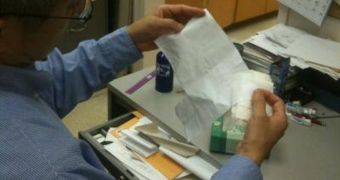The researchers at UC Davis have found a way to incorporate a compound known as 2-anthraquinone carboxylic acid, or 2-AQC, into cotton fabrics.
This chemical bonds strongly to the cellulose in cotton, making it difficult to wash off, unlike current self-cleaning agents. Also, it does not affect the properties of the fabric.
When exposed to light, 2-AQC produces so-called reactive oxygen species, such as hydroxyl radicals and hydrogen peroxide, which kill bacteria and break down organic compounds such as pesticides and other toxins.
"The new fabric has potential applications in biological and chemical protective clothing for health care, food processing and farmworkers, as well as military personnel," says Ning Liu, who conducted the work as a doctoral student in Professor Gang Sun's group in the UC Davis Division of Textiles of Clothing.
According to UC Davis scientists, 2-AQC may be more expensive than other compounds, but cheaper equivalents are also available.

 14 DAY TRIAL //
14 DAY TRIAL //